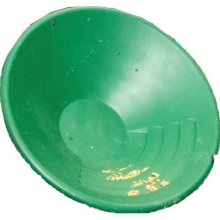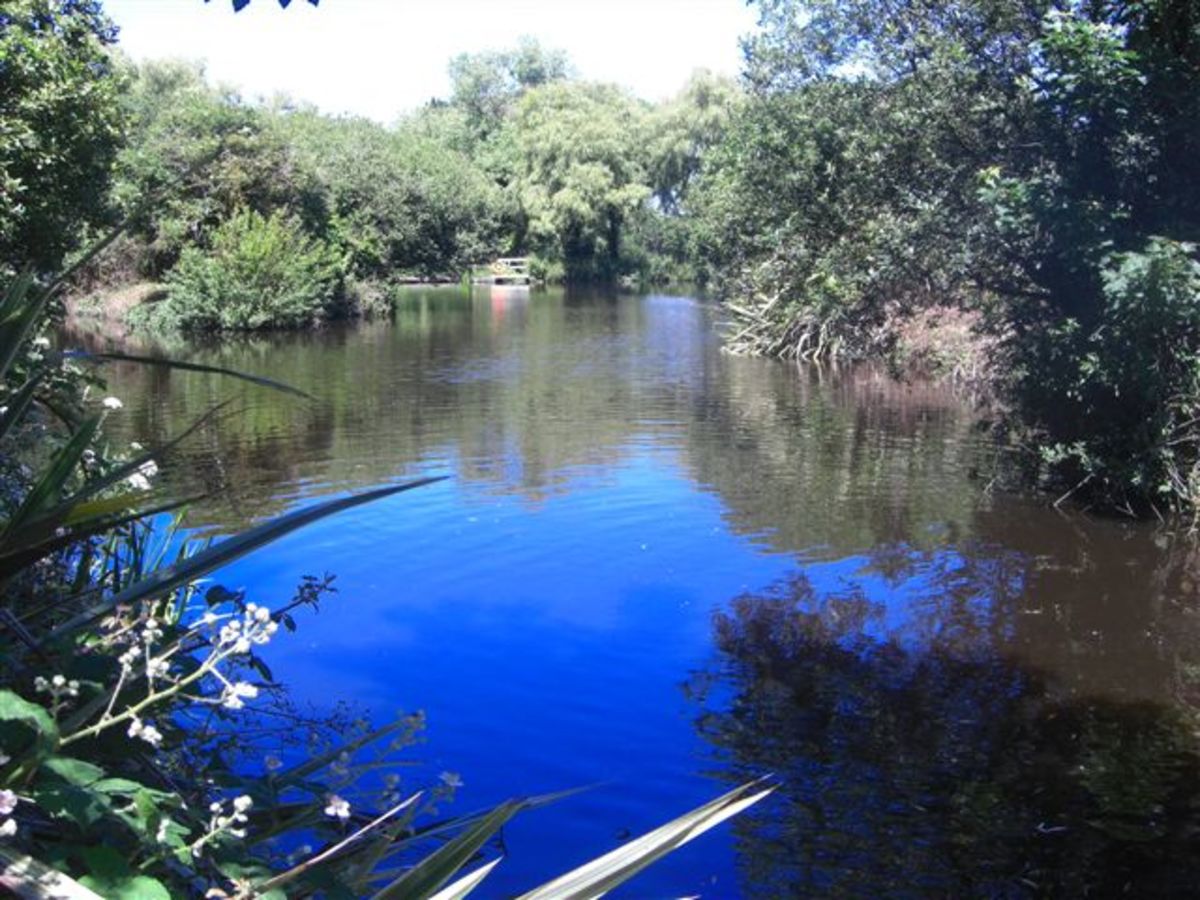How to Use a Gold Pan
Pay dirt!

How to use a gold pan
I sometimes attend the yearly gold shows and marvel at all the fine new equipment designed to separate placer gold from the rocks, sand, mud and trash normally found in the streambeds where placer gold is found. While all the dredges, sluices, rocker boxes, and various other high production gadgets work very well, in the end, the concentrates must still be panned to recover the gold, and the lowly $10 pan is still the best recovery tool of all.
There are two types of gold deposits. One is the hard rock mine, where the gold is still captured in rock, sometimes in veins and sometimes in tiny particles embedded inside rocks. The other type is the one we'll talk about here...the placer deposit. Placers are simply collections of free gold that were eroded out of the parent rock, washed down into streambeds over the eons, and finally concentrated in places where the stream slows down, such as the inside of a bend or where the streambed levels out.
The old saying is, “Gold is where you find it’, which is part of the fun. Prospectors sample the places I mentioned, like the inside of a bend, or the downstream side of boulders, and the best place of all…a crack in bedrock where bonanzas are sometimes found.
To understand how the gold pan works, we have to understand the nature of the gold we seek. Gold is one of the heaviest of all substances, with a specific gravity of over 19. Simply put, that means that gold is19 times heavier than water, volume for volume. To put that into perspective, lead has a specific gravity of right at 11. That means that gold is almost twice as heavy as lead, and we all know how heavy lead is. In fact, wherever we find gold in a stream, we usually also find lead and sometimes free mercury, which is also quite heavy with a specific gravity of over 13. All of them tend to settle in the same spots because they are so heavy. I have panned out lead bullets that are over a hundred years old.
The gold pan very effectively employs the great weight of gold by creating a situation where the gold can easily find its way to the bottom of the pan and stay there while the rocks, sand, and mud are gradually washed away. Let’s grab our pans and go find some gold! It’s great fun and excellent exercise.
Find a spot in the stream where the water is fairly quiet and where you can sit so your poor old back can last the day. Until you’ve had some practice, it’s best to only fill your pan about half full. It’s also much easier on hands and arms that are not used to handling a heavy gold pan.
The deeper you dig, the more likely you are to find gold. Remember, gold is extremely heavy, so it will always work its way down until it can’t go any farther, and the only thing that will permanently stop it is bedrock. If your first sample is negative, dig deeper. If you hit bedrock, that’s where you’ll most likely find the heaviest concentrations of gold.
Sample on the inside of a bend or on the downstream side of a boulder. Warning! Do not dig under or very close to a boulder because they have been known to suddenly roll into such holes, and I don’t want to lose a reader!
Once you have a sample in your pan, place it completely under water and use your fingers to break up the dirt, rocks, and sand. You might want to allow the stream to move the muddy water downstream first so you can see what you are doing. Later, when you have more experience, you won’t need to see because you’ll know what your pan is doing.
The trick is to get all the rocks, sand, trash, and hopefully, gold, into suspension in the water. Think of it as a rock and sand soup, with everything suspended in the water and nothing lying still on the bottom. While all that lighter stuff is suspended, the extremely heavy gold will almost immediately fall straight down to the bottom of the pan! The way you accomplish that is to move your pan in a swirling, back and forth motion while keeping it completely underwater. It takes a little practice, but once you see all that stuff moving freely in your pan, you’ll know you’re doing it right. Keep it swirling and in suspension for about 30 seconds and then move to the next step.
Now that you have moved the heavy minerals (gold, black sands, lead, etc.) much lower in your pan, you can remove the lighter materials that have moved to the top. The larger rocks can just be tossed out by hand. Once that has been done, you can use the water to gently wash off the top layer of light minerals. Holding the pan completely under water again, gently move the pan back and forth while tilting it forward a few degrees and watch the water float the light stuff right out of your pan!
Now all you need to do is repeat those steps…swirl everything, making sure it’s all in suspension, and then tilt the pan forward a few degrees and use the water to wash off the top layer of light stuff. Always keep your pan underwater. Keep going until there’s nothing left in your pan but a small pocket of black sand and hopefully gold.
(Don’t worry that you are washing gold out of your pan along with the light stuff! If you have seen the material in your pan in suspension, then you know that heavy gold is safely stored in the very bottom of your pan.)
Now for the fun part! You should have a couple of tablespoons or so of black sand and other heavy elements left in your pan. If there’s any gold, it will be safely deposited along the front ridge at the bottom of your pan. Carefully pour out all the water except a couple of tablespoons and then gently swirl the water around, moving the black sands out of the way, and look for that yellow flash in the pan! And yes, gold looks just like the gold around your finger! It’s unmistakably gold and as soon as you see your first tiny flake (maybe even a nugget!), you’ll be hooked for life.
I prefer the green pans with riffles built in to one side. The riffles are great for trapping gold when you first start with a full pan, but they become a nuisance as the pan empties, so when that happens, just rotate the pan and use the smooth side. The green color makes the yellow gold stand out far better than the black pans, in my humble opinion.
Good luck and happy panning!








